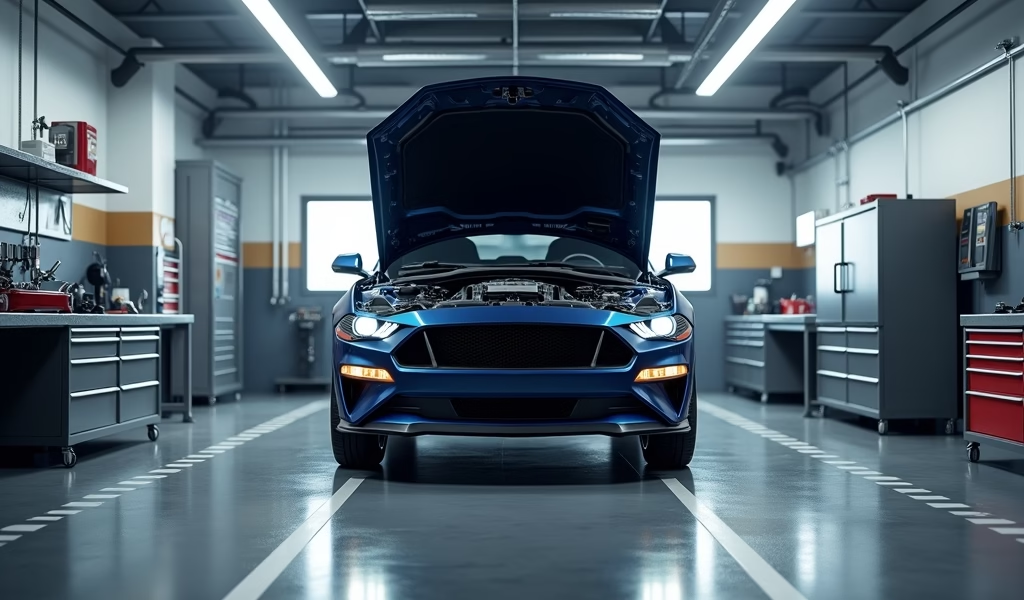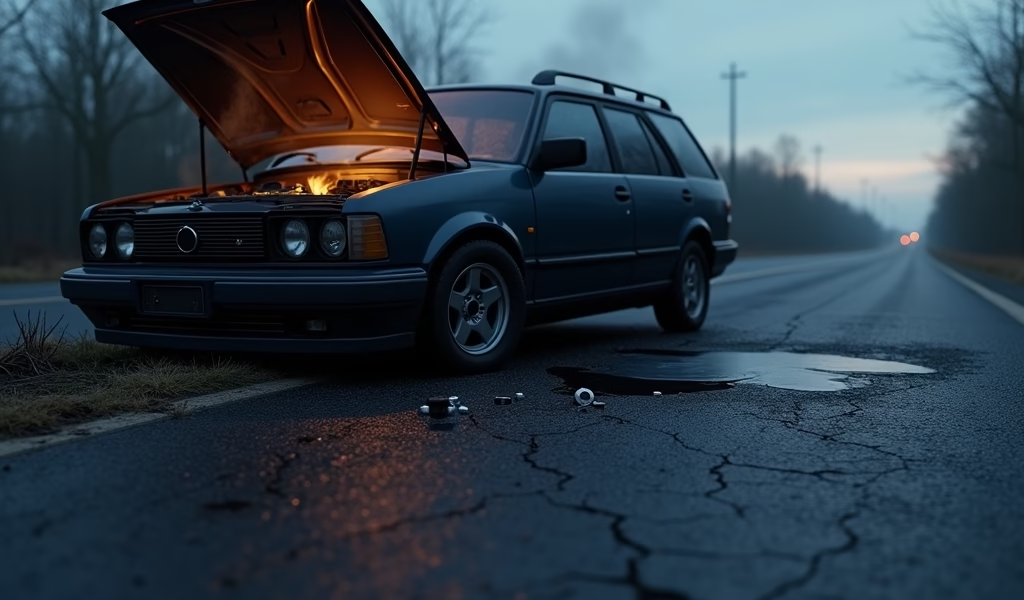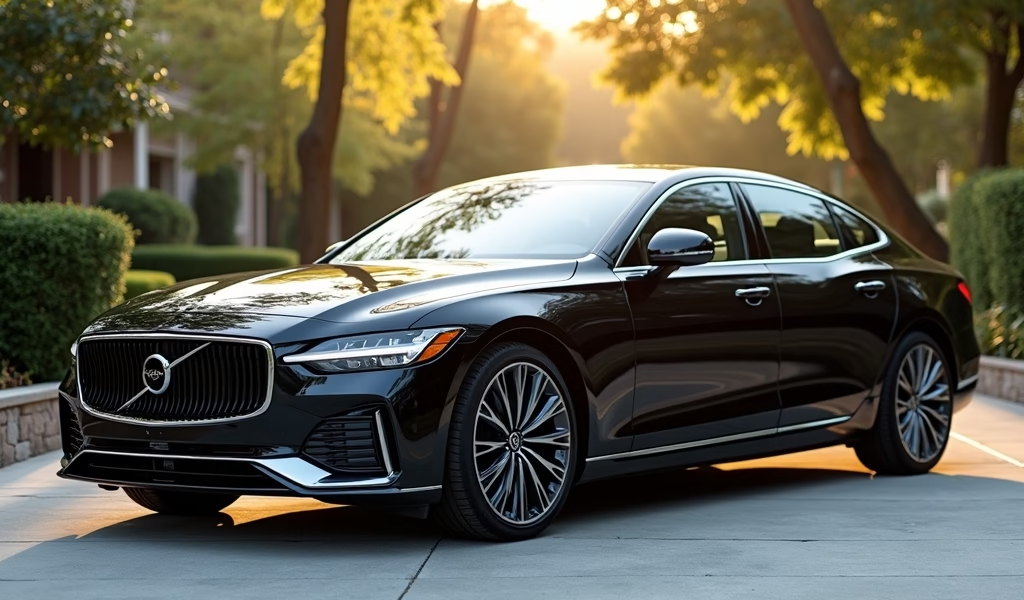Overview
This article provides detailed guidance on maintaining vehicles purchased with 0% APR financing, emphasizing that proper maintenance preserves vehicle value, prevents costly repairs, and protects warranty coverage regardless of financing terms. It covers essential maintenance tasks like oil changes, tire care, and fluid checks, while offering troubleshooting advice and explaining when to choose professional service versus DIY maintenance.
Table of Contents
- Understanding 0 APR Cars
- Benefits of Proper Maintenance for 0 APR Vehicles
- Essential Maintenance Tasks for 0 APR Cars
- Creating a Maintenance Schedule That Works
- DIY vs. Professional Service: Making the Right Choice
- Protecting Your Investment: Advanced Maintenance Tips
- Troubleshooting Common Issues Before They Escalate
- Conclusion
- Frequently Asked Questions
Understanding 0 APR Cars
When I first started working as a mechanic at a dealership that offered 0 APR car deals, I met Sarah, who had just purchased a beautiful sedan with zero-interest financing. She was thrilled about her monthly payments but hadn’t given much thought to maintenance. Six months later, Sarah returned with engine problems that could have been prevented with basic care. That day changed how I approach educating customers about their 0 APR vehicles.
0 APR cars represent vehicles purchased with zero-percent Annual Percentage Rate financing. This attractive financing option means you’re not paying interest on your auto loan, making these vehicles financially appealing. However, many owners focus so much on the financial benefits that they overlook the importance of proper maintenance.
Whether you’ve recently purchased a vehicle with 0 interest car financing or are considering such a deal, understanding that these cars require the same diligent care as any other vehicle is crucial. Manufacturers offer these financing terms to attract buyers, but your responsibility to maintain the vehicle remains unchanged.
The misconception that special financing somehow correlates to different maintenance needs has led many owners astray. Your vehicle’s maintenance requirements are determined by its make, model, and driving conditions—not your financing terms. Nevertheless, considering you’ve made a financially savvy decision by avoiding interest payments, it makes sense to protect that investment through proper care.
Benefits of Proper Maintenance for 0 APR Vehicles
Maintaining your 0 APR vehicle isn’t just about keeping it running—it’s about protecting your financial investment. Regular maintenance preserves your vehicle’s value, which becomes especially important if you decide to sell or trade in before your loan term ends. A well-maintained car can retain up to 15% more of its value compared to a neglected one, according to Consumer Reports’ maintenance research.
Beyond value retention, proper maintenance dramatically reduces the risk of expensive repairs. I’ve seen countless customers save thousands by addressing minor issues before they escalated into major problems. A simple $30 oil change can prevent a $3,000 engine repair—a compelling return on investment by any standard.
Reliability is another critical benefit. Your 0 APR financing saved you money on interest, but an unreliable car can quickly negate those savings through towing fees, rental car expenses, and lost workdays. Consistent maintenance ensures your vehicle starts when you need it and gets you where you’re going safely.
Finally, there’s the matter of warranty protection. Many 0 percent financing for 72 months cars come with comprehensive warranties, but these warranties typically require proof of regular maintenance. Skipping scheduled service could void your warranty coverage, leaving you financially vulnerable precisely when you need protection most.

Essential Maintenance Tasks for 0 APR Cars
Regardless of your financing arrangement, certain maintenance tasks remain non-negotiable for vehicle longevity. Let me walk you through the essentials that every 0 APR car owner should prioritize:
Regular Oil Changes
Oil is your engine’s lifeblood. Modern vehicles typically need oil changes every 5,000-10,000 miles, but this varies by model. I recommend checking your owner’s manual for the manufacturer’s specific recommendation rather than relying on the old 3,000-mile rule.
Using the recommended grade of oil makes a substantial difference. Once, I had a customer who consistently used the wrong viscosity because it was cheaper. The resulting engine damage cost him over $2,000—far more than he’d “saved” on oil.
Tire Care and Rotation
Proper tire maintenance affects everything from fuel efficiency to safety. Check your tire pressure monthly, as even slightly underinflated tires can reduce fuel economy by up to 3%. Rotate your tires every 5,000-7,500 miles to ensure even wear and extended tire life.
Don’t forget seasonal considerations. If you live in an area with severe winters, investing in winter tires can improve safety and performance when temperatures drop below 45°F.
Brake System Maintenance
Your braking system deserves special attention. Have your brake pads inspected during every other oil change, and don’t ignore warning signs like squealing or grinding noises, vibrations when braking, or a spongy brake pedal.
Brake fluid should be flushed and replaced according to your manufacturer’s schedule—typically every 2-3 years. This prevents moisture accumulation that can degrade braking performance and damage components.
Filter Replacements
Various filters keep your vehicle running cleanly and efficiently:
- Air filter: Replace every 15,000-30,000 miles, or more frequently in dusty environments
- Cabin air filter: Change every 15,000-25,000 miles to maintain air quality
- Fuel filter: Follow manufacturer recommendations, typically every 30,000-60,000 miles
A clogged air filter can reduce acceleration and fuel efficiency, while a dirty cabin filter affects air quality and HVAC performance. These simple replacements yield significant benefits for minimal cost.
Fluid Checks and Replacements
Beyond oil, several other fluids need regular attention:
- Coolant/antifreeze: Check levels monthly and flush according to your manual
- Transmission fluid: Inspect for level and condition at regular intervals
- Power steering fluid: Check monthly and top off as needed
- Windshield washer fluid: Refill as needed for visibility
I once had a customer who ignored a slow coolant leak. By the time their engine overheated on the highway, the repair bill had ballooned to over $1,500—all to fix what would have been a $150 hose replacement had it been caught early.
Creating a Maintenance Schedule That Works
Developing a personalized maintenance schedule is one of the smartest moves any 0 APR car owner can make. Start with your owner’s manual—this often-overlooked resource contains the manufacturer’s specific recommendations for your exact model.
Consider creating a digital calendar with maintenance reminders. Most smartphones allow you to set recurring reminders based on time or mileage. For example, if you drive approximately 1,000 miles per month, you might set a reminder for an oil change every five months if your vehicle requires service every 5,000 miles.
Factor in your specific driving conditions when planning maintenance intervals. “Severe” driving conditions—which include frequent short trips, extreme temperatures, dusty environments, or stop-and-go traffic—may require more frequent service. Most people don’t realize that their normal driving patterns actually qualify as “severe” by manufacturer definitions.
Keep detailed maintenance records, whether digital or physical. These records prove invaluable for warranty claims and significantly enhance resale value. A comprehensive maintenance history can increase your vehicle’s value by hundreds or even thousands of dollars when it’s time to sell.
Consider using a maintenance tracking app that allows you to log services, store receipts, and receive reminders. Many of these apps also provide maintenance schedules based on your specific vehicle’s requirements. Some popular options include CARFAX Car Care, MyCarfax, and aCar.
DIY vs. Professional Service: Making the Right Choice
As a mechanic, I’ve seen both the triumphs and disasters of DIY maintenance. Certain tasks are perfectly suitable for the average owner with basic tools and mechanical knowledge:
- Air filter replacement
- Wiper blade installation
- Light bulb changes
- Tire pressure checks and adjustments
- Fluid top-offs
These simple tasks can save you money while giving you a better understanding of your vehicle. However, there’s wisdom in knowing your limits. Complex procedures involving electrical systems, transmission components, or engine internals are best left to professionals with specialized tools and diagnostic equipment.
If you’re interested in expanding your DIY skills, consider starting with basic tasks and gradually building your knowledge. Online resources like Eric The Car Guy and manufacturer-specific forums can provide valuable guidance. Just remember that mistakes can be costly—both financially and in terms of safety.
When selecting a professional service provider, don’t simply choose the lowest price. Look for ASE-certified technicians, read reviews, and ask about warranties on parts and labor. Developing a relationship with a trusted mechanic who knows your vehicle’s history can be invaluable for long-term maintenance.
Remember that dealership service departments may have specialized training for your specific make and model, which can be particularly important for newer vehicles with advanced technology systems. However, independent shops often offer more competitive pricing and may provide more personalized service.

Protecting Your Investment: Advanced Maintenance Tips
Beyond routine maintenance, several advanced practices can extend your 0 APR car’s lifespan and preserve its value. Consider these professional-grade tips:
Fuel System Maintenance
Using quality fuel from reputable stations helps prevent fuel system issues. Consider adding a fuel system cleaner every 5,000-10,000 miles to remove deposits from fuel injectors and intake valves. This is especially important for direct-injection engines, which are increasingly common in newer models.
I’ve restored noticeable performance and improved fuel economy for numerous customers by performing thorough fuel system cleanings. The difference is often immediately apparent in smoother idling and more responsive acceleration.
Battery Care
Modern vehicles place heavy demands on batteries. Have your battery tested annually, particularly before extreme weather seasons. Clean any corrosion from terminals using a solution of baking soda and water, and ensure connections are tight.
Consider a battery tender if your vehicle sits unused for extended periods. This small investment prevents the deep discharges that significantly shorten battery life.
Timing Belt/Chain Maintenance
Timing belt replacement is one of the most critical scheduled maintenance items. Failure can cause catastrophic engine damage in interference engines. Check your owner’s manual for replacement intervals—typically every 60,000-100,000 miles for timing belts.
Timing chains generally last longer but aren’t maintenance-free. Listen for unusual rattling noises from the front of the engine, which could indicate a stretched timing chain.
Transmission Care
Modern transmissions are sophisticated and expensive to repair. Follow manufacturer recommendations for fluid changes—typically every 30,000-60,000 miles for conventional automatics, though some “lifetime” fluids may have longer intervals.
Avoid aggressive driving habits that stress your transmission, such as shifting to Drive while the vehicle is still rolling backward or using the shifter as a hand rest in manual transmissions.
Troubleshooting Common Issues Before They Escalate
Developing a sense for potential problems can save you thousands in repair costs. Pay attention to these warning signs:
Unusual Noises
Different sounds indicate specific problems:
- Squealing when braking: Likely worn brake pads
- Grinding when braking: Metal-on-metal contact requiring immediate attention
- Clicking when turning: Possibly a CV joint issue
- Knocking from the engine: Potentially serious internal engine problems
Don’t ignore new noises—they rarely resolve themselves and typically worsen over time. A strange sound that costs $200 to fix today might become a $2,000 repair next month.
Warning Lights
The check engine light is your vehicle’s way of communicating problems. Don’t ignore it, even if the car seems to be running normally. Many auto parts stores will scan your vehicle for free to identify the specific issue.
Other warning lights, like those for oil pressure, temperature, or brake systems, typically indicate more urgent problems that require immediate attention. Continuing to drive with these warnings illuminated can result in severe damage.
Performance Changes
Any noticeable change in how your vehicle performs warrants investigation:
- Reduced acceleration or power
- Rough idling or stalling
- Difficulty starting
- Increased fuel consumption
These symptoms often indicate developing problems that are relatively inexpensive to correct early but can become costly repairs if ignored.
Fluid Leaks
Different fluids have distinctive colors and locations:
- Clear to light brown (under front of car): Likely water from A/C condensation (normal)
- Green or orange (under front): Engine coolant leak
- Dark brown/black (under engine): Oil leak
- Red (middle to front): Transmission or power steering fluid
Place cardboard under your parked car overnight to help identify leaks. Even small leaks should be addressed promptly before they worsen.
Conclusion
Maintaining your 0 APR car isn’t just about preserving a machine—it’s about protecting a smart financial decision. You’ve already demonstrated financial savvy by securing zero-interest financing; now extend that wisdom to caring for your investment.
The maintenance tips we’ve covered create a comprehensive approach to vehicle care that balances cost-effectiveness with thoroughness. By following these guidelines, you’ll enjoy greater reliability, enhanced safety, improved performance, and stronger resale value when it’s time to move on to your next vehicle.
Remember Sarah from the beginning of our discussion? After her initial engine scare, she became meticulous about maintenance. Eight years later, she sold that sedan for significantly more than comparable models, thanks to its excellent condition and documented maintenance history. Her next purchase? Another 0 APR vehicle—but this time, with a maintenance plan from day one.
Whether you choose to perform some maintenance yourself or entrust your vehicle to professionals, the important thing is consistency. Your owner’s manual remains your best guide for specific recommendations, but the principles we’ve discussed apply universally.
Your 0 APR car represents both transportation and a financial commitment. With proper care, it will serve you reliably for years to come, maintaining its value and performance throughout your ownership experience.
Frequently Asked Questions
Do 0 APR cars require special maintenance compared to other vehicles?
No, 0 APR cars require the same maintenance as any other vehicle of the same make and model. The financing terms don’t affect the mechanical maintenance needs.
How often should I change the oil in my 0 APR car?
Follow your owner’s manual recommendations, typically every 5,000-10,000 miles for modern vehicles. The interval depends on your specific model and driving conditions, not your financing terms.
Will skipping maintenance void the warranty on my 0 APR vehicle?
Yes, neglecting required maintenance can void parts of your warranty coverage. Manufacturers require proper maintenance to honor warranty claims.
Are dealer services required to maintain my 0 APR car’s warranty?
No, you can use any qualified repair shop as long as you follow the manufacturer’s maintenance schedule and keep records. The Magnuson-Moss Warranty Act protects your right to choose your service provider.
What’s the most cost-effective maintenance strategy for 0 APR cars?
Follow the manufacturer’s maintenance schedule, address small issues before they become major problems, and consider doing simple maintenance tasks yourself. Preventative maintenance is always less expensive than repairs.

